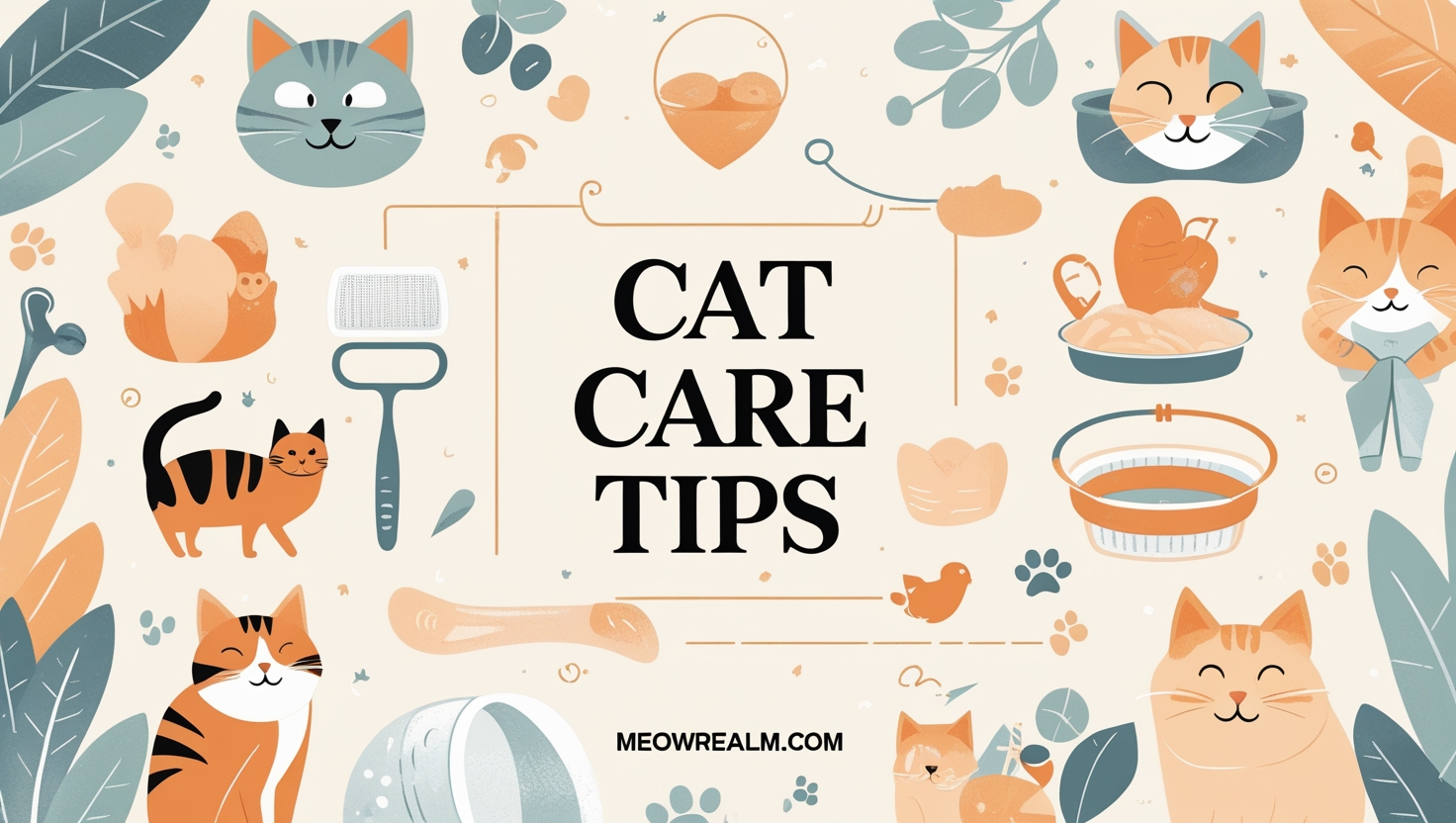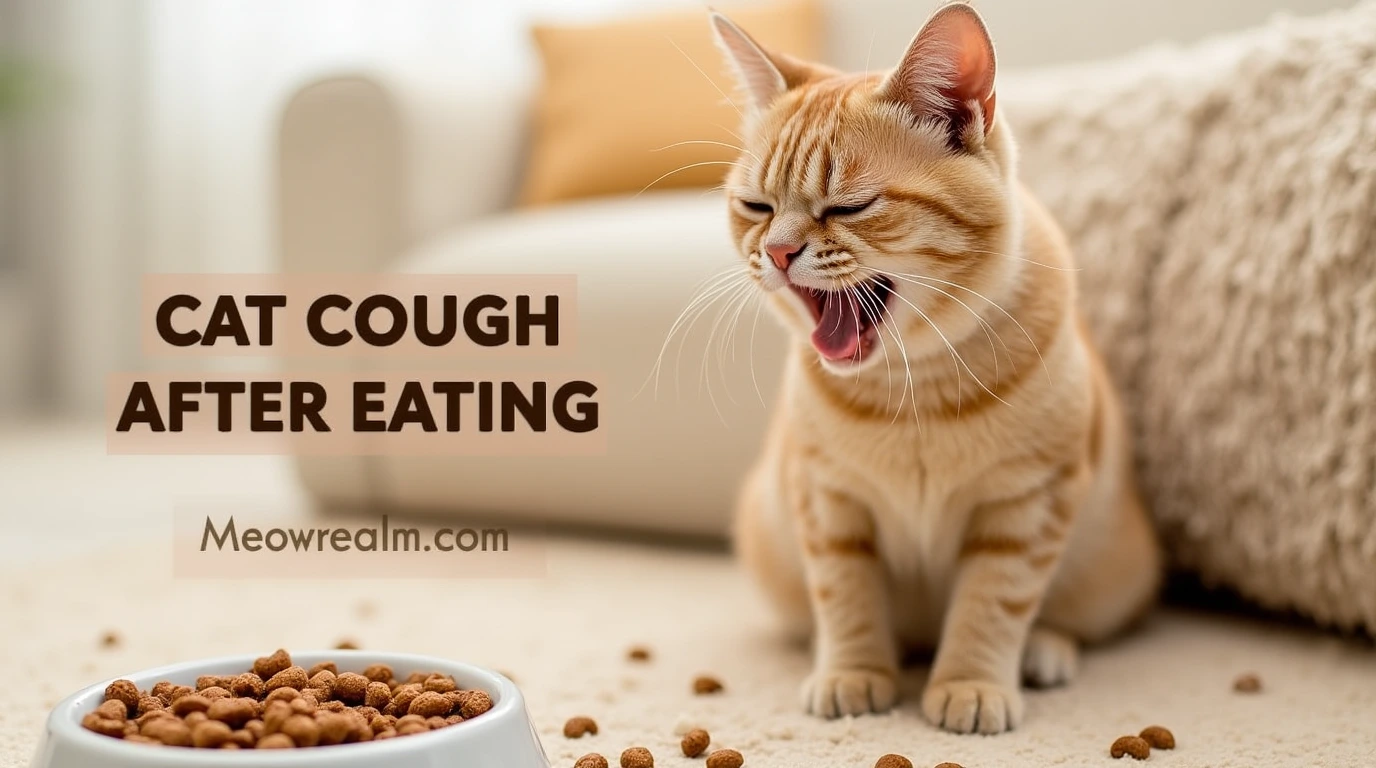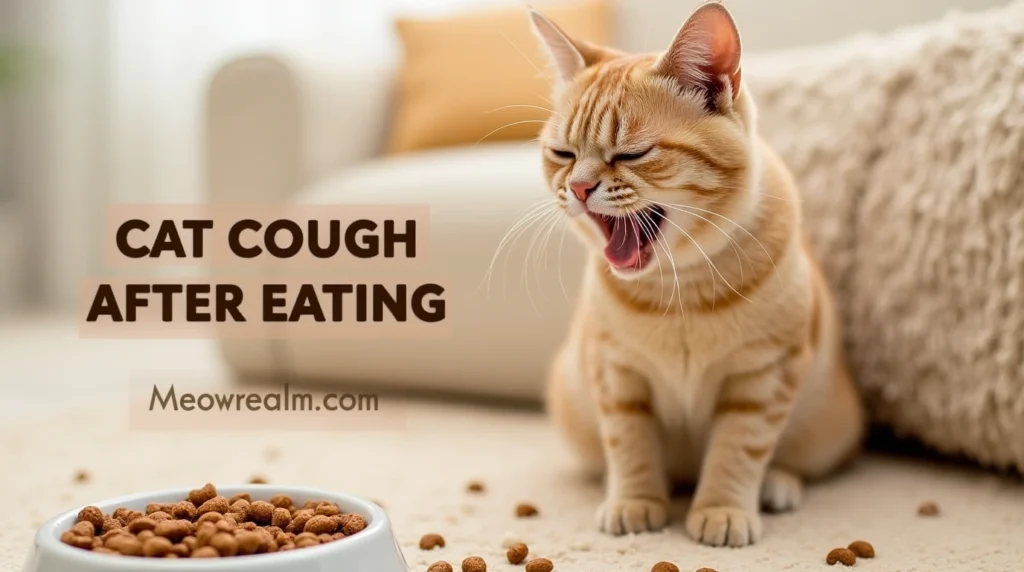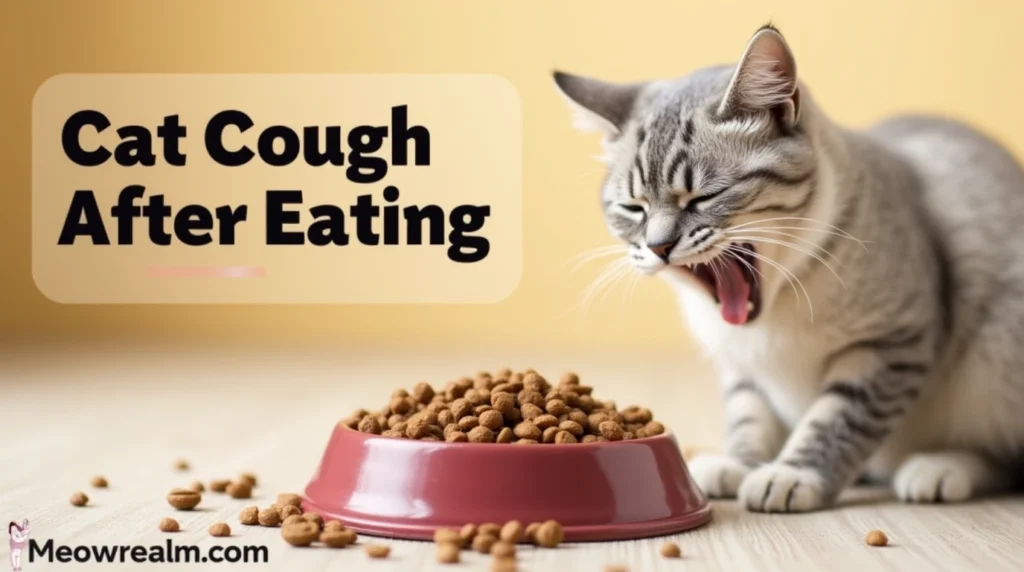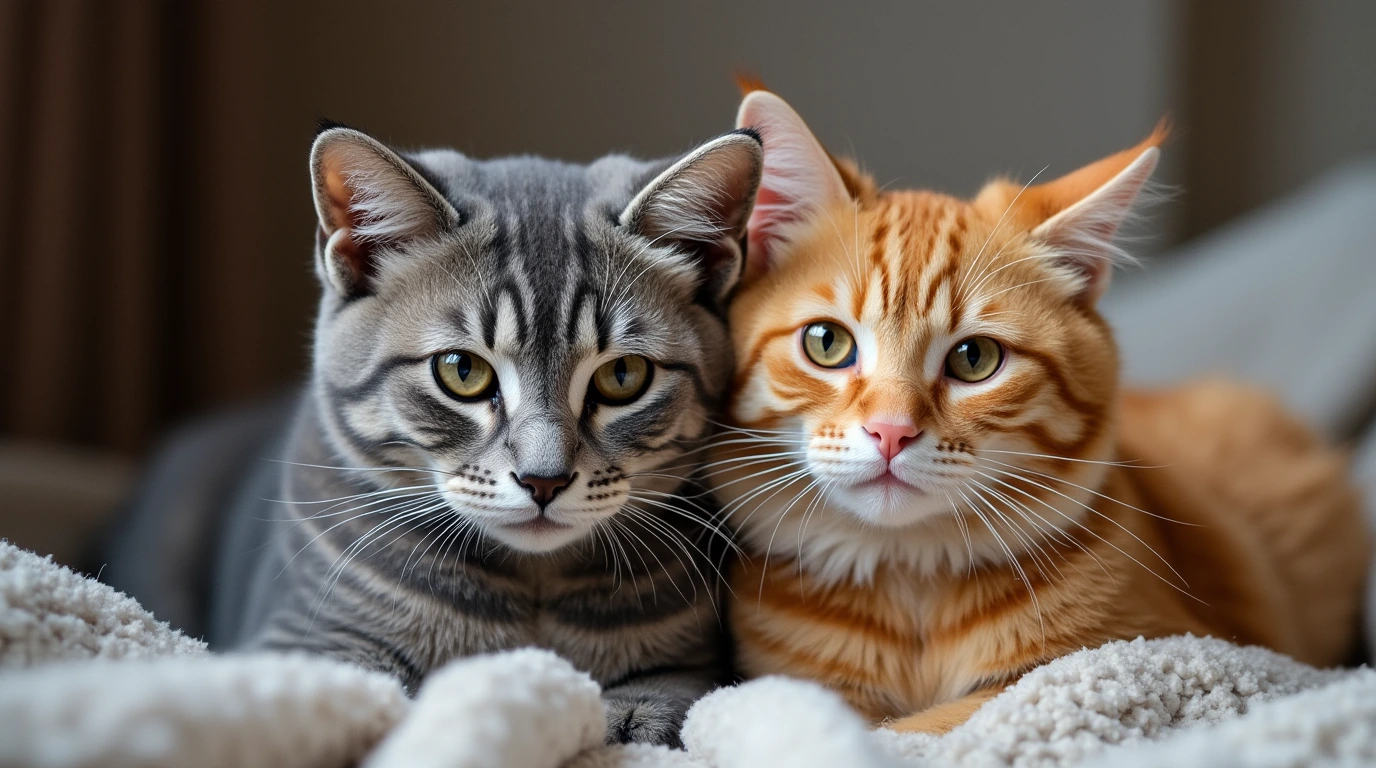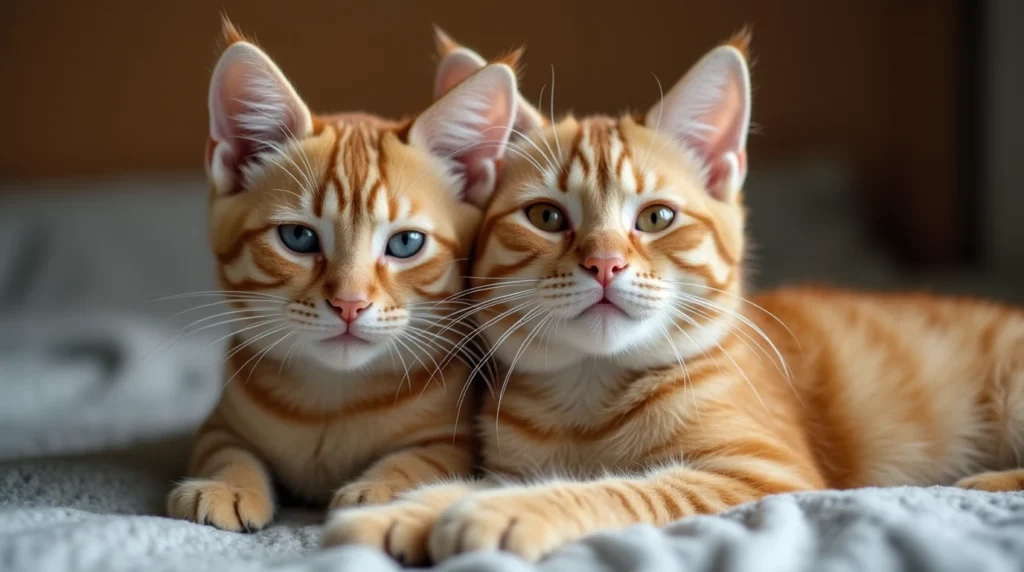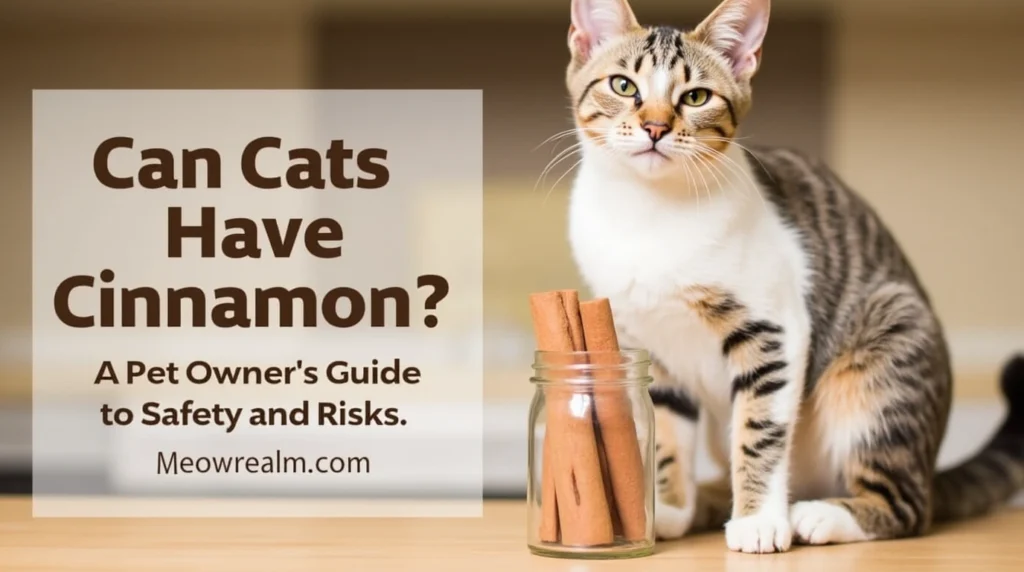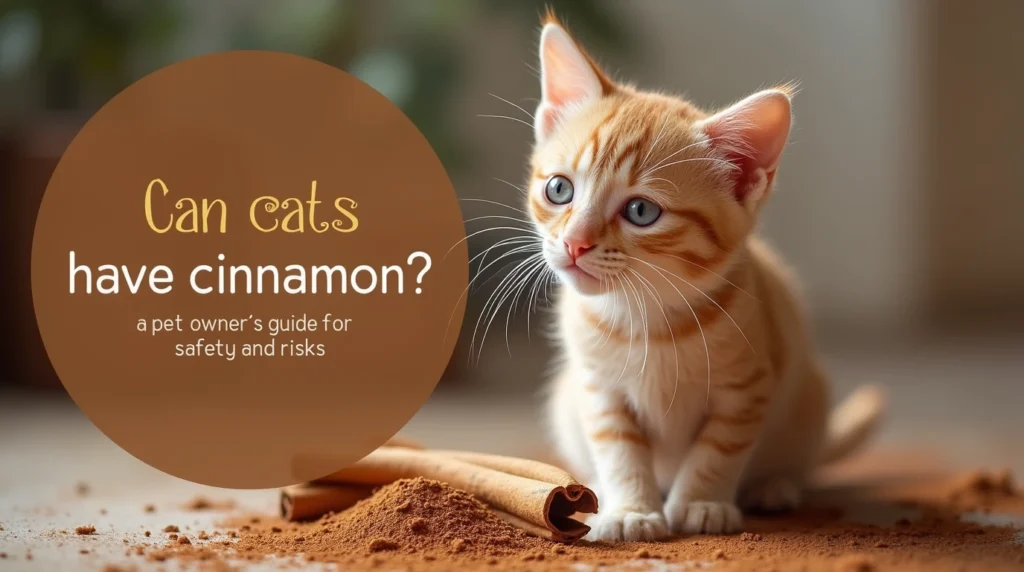As a cat owner, you want the best for your furry friend. Whether you’re a first-time cat parent or a seasoned pro, keeping your cat happy and healthy is a priority. Cats are wonderful companions, but their needs can sometimes be tricky to navigate. That’s why we’ve put together these 10 must-know cat care tips that will help you ensure your feline is living its best life. These tips will guide you in providing a well-balanced lifestyle for your cat, allowing you both to enjoy a long and fulfilling relationship.
Table of Contents

1. Proper Nutrition for Your Cat’s Health
The foundation of your cat’s health begins with proper nutrition. Cats are obligate carnivores, which means their bodies are designed to thrive on meat-based diets. As such, ensuring they receive the right type and amount of food is essential for their well-being.
Choosing High-Quality Cat Food
Not all cat foods are created equal. Look for foods that list animal protein as the first ingredient. Cats need a diet rich in protein to maintain muscle mass and overall health. Choose wet food for added hydration, especially if your cat is not great at drinking water. Wet food helps prevent urinary tract infections and ensures your cat stays hydrated, which is often a concern for cats fed only dry food.
When selecting dry food, choose high-quality brands that provide a balanced diet. Avoid foods with excessive fillers like corn or soy, as these can be harder for your cat to digest.
Portion Control and Meal Timing
Overfeeding can lead to obesity, which is a common problem in cats. The best way to avoid this is by controlling portions. Follow the feeding guidelines on the cat food package, but remember that these are only suggestions. Your cat’s specific dietary needs may vary depending on its age, activity level, and health condition.
It’s better to feed your cat smaller, scheduled meals rather than leaving food out all day. This not only helps regulate their weight but also promotes good digestion and prevents overeating.
Treats in Moderation
While it’s tempting to give your cat treats, moderation is key. Treats should make up no more than 10% of your cat’s daily caloric intake. Use them as rewards for training or simply as a way to show your cat love. Remember, treats high in fat or sugar can contribute to obesity and other health issues.
2. Provide Fresh Water Daily
Water is vital for your cat’s health, especially since many cats are prone to urinary tract issues. Keeping fresh water available at all times encourages your cat to drink and stay hydrated.
Encourage Water Consumption
To get your cat to drink more, consider investing in a water fountain. Cats are naturally attracted to moving water, so a fountain can entice them to drink more than a regular bowl of water. If your cat doesn’t seem interested in water fountains, try placing multiple water bowls around the house. Cats often prefer to drink from separate locations, especially if they are more comfortable in certain areas.
Watch for Signs of Dehydration
Dehydration in cats can lead to serious health problems. Look out for signs like dry gums, lethargy, and sunken eyes. If you notice these symptoms, consult your vet immediately.

3. Regular Grooming for a Clean, Healthy Coat
Grooming is an essential part of keeping your cat clean and healthy. Not only does it keep their coat shiny and beautiful, but it also helps with their overall comfort and well-being.
Brushing Your Cat’s Fur
Long-haired cats require daily brushing, while short-haired cats only need grooming once a week. Regular brushing reduces shedding, prevents hairballs, and helps maintain a healthy coat. It also strengthens the bond between you and your cat, as many cats love the attention they get during grooming.
Use a brush appropriate for your cat’s coat type. For example, a slicker brush works well for long-haired cats, while a bristle brush is ideal for short-haired cats.
Nail Trimming and Ear Cleaning
While grooming, don’t forget to trim your cat’s nails regularly. Overgrown nails can become painful and cause your cat to walk uncomfortably. If you’re unsure how to trim your cat’s nails, ask your vet or groomer to show you the proper technique.
Cleaning your cat’s ears is another important aspect of grooming. Use a vet-approved ear cleaning solution and a soft cotton ball to gently remove any buildup. Be careful not to go too deep into the ear canal, as this could cause injury.
4. Keep Their Litter Box Clean
A clean litter box is essential for both your cat’s hygiene and happiness. Cats are fastidious creatures, and if their litter box is dirty, they may refuse to use it.
Daily Cleaning
Scoop out waste from the litter box every day to keep it clean and odor-free. This simple task will help prevent any unpleasant smells and ensure your cat continues to use the box. Once a week, change the litter entirely and wash the box with mild soap and warm water.
Proper Litter Box Placement
Place the litter box in a quiet, low-traffic area of your home. Cats value their privacy, and a noisy or high-traffic area can make them feel stressed or uncomfortable. Also, make sure the box is not too close to your cat’s food or water bowls, as they typically prefer to keep these areas separate.
5. Regular Vet Checkups for Preventive Care
One of the most important aspects of cat care is regular veterinary visits. Preventive care is key to spotting health issues before they become serious problems.
Annual Wellness Exams
Take your cat to the vet for an annual checkup. During these visits, your vet will check your cat’s overall health, administer necessary vaccinations, and provide preventative treatments such as flea and tick control. This is also a great time to discuss any changes in your cat’s behavior or diet.

Dental Care
Cats are prone to dental issues, and it’s essential to include dental care in your regular vet visits. Ask your vet to check your cat’s teeth for signs of disease. If you notice bad breath, difficulty eating, or red, inflamed gums, it may be time for a professional cleaning. Additionally, you can brush your cat’s teeth at home with a cat-safe toothbrush and toothpaste.
6. Create a Safe, Enriched Environment
A stimulating environment helps keep your cat mentally and physically active. Cats are naturally curious and playful, and a lack of stimulation can lead to boredom, anxiety, and unwanted behaviors.
Interactive Toys and Games
Toys are an excellent way to keep your cat entertained. Use interactive toys like laser pointers, feather wands, or puzzle toys to keep your cat engaged. Puzzle toys are especially great because they challenge your cat’s problem-solving skills and reward them with treats.
Vertical Space for Climbing
Cats love to climb, and providing vertical space such as cat trees or shelves can satisfy their need for elevation. Cats feel secure when they can observe their surroundings from a higher vantage point, and it also gives them a place to retreat when they want privacy.
Safe Outdoor Time
If your cat enjoys the outdoors, consider setting up a catio, or a cat-safe outdoor enclosure. This allows your cat to experience the fresh air and sunshine without the risks of roaming freely. If you don’t have access to an outdoor space, supervised walks using a leash can also provide mental stimulation and exercise.
7. Understand and Respect Their Behavior
Every cat has a unique personality, and it’s important to understand and respect their boundaries. Cats can be independent, but they also enjoy affection in their own way.
Recognize Signs of Stress or Illness
Stress or illness can manifest in various ways. Cats may hide, stop eating, or exhibit changes in their litter box habits. If you notice these signs, it’s essential to consult with your vet to determine if there’s an underlying health issue.
Respect Their Independence
Cats are known for their independence, and they may not always want to be around you. When your cat retreats to a quiet space, respect their need for solitude. Forcing affection on a cat when they’re not in the mood can create stress and damage your relationship.
8. Keep Your Cat Stimulated Mentally and Physically
Boredom can lead to unwanted behaviors, such as scratching furniture or excessive meowing. Keeping your cat mentally and physically stimulated is essential for their happiness.
Interactive Play
Engage your cat in interactive play sessions using toys that simulate prey, such as feather wands or balls. These activities mimic hunting behaviors and allow your cat to burn off energy in a productive way.
Training Sessions
Cats can be trained, and teaching them basic tricks or obedience commands can help keep their minds sharp. Use positive reinforcement, such as treats and praise, to reward your cat for learning new behaviors. Start with simple commands like “sit” or “high five,” and gradually increase the difficulty.
9. Monitor Their Weight
Obesity is a growing problem in cats, and it can lead to a variety of health issues, including diabetes, joint problems, and heart disease.
Maintain a Healthy Weight
Regularly weigh your cat to ensure they are at a healthy weight. If your cat is overweight, consult with your vet about adjusting their diet and exercise plan. Avoid free-feeding and stick to scheduled meals to help prevent overeating.
Signs of Obesity
Obesity in cats can be difficult to notice because their fluffy coats can hide weight gain. However, signs to watch for include difficulty grooming, lack of energy, and an inability to feel your cat’s ribs. If you suspect your cat is overweight, it’s important to address the issue with your vet’s guidance.
10. Provide Lots of Love and Attention
Lastly, don’t underestimate the importance of affection. Cats are social creatures, and they thrive on love and attention.
Daily Interaction
Spend quality time with your cat every day. Whether it’s through play, grooming, or simply cuddling on the couch, consistent attention strengthens your bond and keeps your cat emotionally healthy.
Understanding Their Needs
Every cat is different, so it’s crucial to observe your cat’s behavior and respect their needs. Some cats enjoy being held and cuddled, while others prefer a more independent lifestyle. Pay attention to their cues and find ways to show affection that align with their preferences.
Pros and Cons of Cat Care Tips
Pros: Cat care tips
- Health Benefits: Regular care improves your cat’s longevity and reduces the risk of diseases.
- Happier Cats: Proper nutrition, grooming, and mental stimulation result in a content and well-adjusted cat.
- Stronger Bond: These tips enhance the relationship between you and your cat, fostering trust and affection.
Cons: Cat care tips
- Time Commitment: Caring for a cat involves daily tasks, including feeding, grooming, and cleaning.
- Cost: Proper care can be expensive, with vet bills, food, and supplies adding up over time.
- Space Requirements: Cats need space to roam and explore, particularly if you have multiple cats.
FAQ About Cat Care Tips
Q1: What are the best cat care tips for first-time cat owners?
A1: Start by focusing on nutrition, regular grooming, and providing a clean litter box. Spend quality time with your cat to build trust, and always monitor their health and behavior.
Q2: How often should I take my cat to the vet for checkups?
A2: Annual checkups are recommended for most cats, but older cats or those with health issues may need more frequent visits.
Q3: Can I let my cat outside?
A3: Outdoor time should be supervised or restricted to a safe, enclosed area like a catio to keep your cat safe from predators, traffic, and other dangers.
Q4: What should I do if my cat stops eating?
A4: If your cat refuses food for more than 24 hours, contact your vet immediately, as this could be a sign of a medical issue.
Conclusion Cat care tips
By following these 10 must-know cat care tips, you’re ensuring your feline companion leads a healthy, happy, and fulfilling life. Regular care, attention, and love will go a long way in fostering a lasting bond with your cat. Your furry friend depends on you for their well-being, and by implementing these tips, you’ll provide the best possible life for your cat, creating a lifetime of joy and companionship.
Cat care tips

